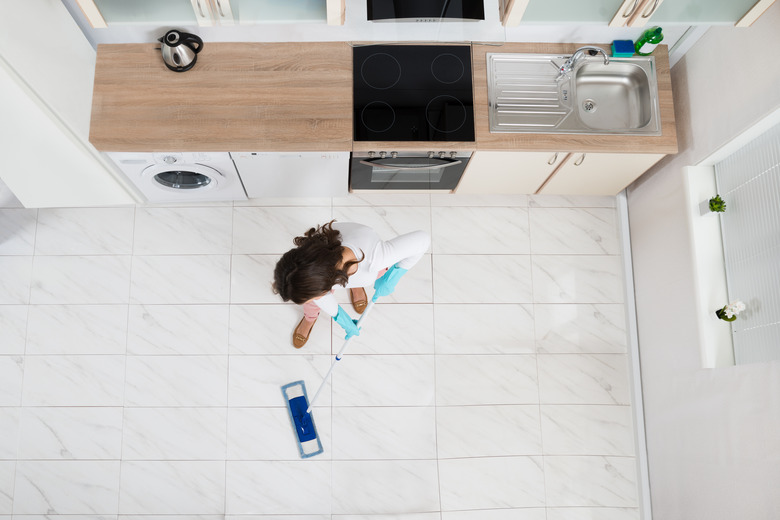Can I Use A Little Bleach On My Laminate Floor?
If you're like most householders, you have a bottle of bleach in the laundry room and you reach for it frequently for non-laundry purposes. You may use it to clean mold off the bathroom walls or to clean the toilets. It's best to keep it away from your laminate floors, though, because it probably won't do what you want it to do, and it could cause problems instead.
Some flooring dealers are unequivocal in their advice to avoid bleach on laminate floors while others allow that it's OK to use sparingly. There really isn't a good reason to use bleach on laminate floors, though. You can use commercial cleaning products that are better or you can make your own. Although bleach may be a good disinfectant, you seldom need to disinfect the floor.
Avoid Bleach on Laminate and Wood Flooring
Avoid Bleach on Laminate and Wood Flooring
Household bleach is a 5 percent solution of sodium hypochlorite, which whitens by undergoing an oxidation reaction with certain molecules called chromophores and sanitizes by oxidizing molecules in the cells of germs. That's not all that's in a bottle of bleach, though. The bleach solution also contains small amounts of sodium hydroxide, also known as caustic soda, which is the stuff in drain cleaners that eats through clogs.
Prolonged exposure to bleach will damage the finish on a laminate floor, but occasional exposure is probably safe, provided you wipe the floor dry after using it. However, there's always a chance of seepage between floorboards and that can swell the boards and raise the edges.
It's safer to use bleach on vinyl flooring, but it's equally unnecessary. If the purpose is to remove mold, you should do that with soap and water, according to the EPA. If mold is growing under the finish of your laminate flooring, bleach won't kill it. It has a high surface tension that prevents it from seeping into porous surfaces and reaching the roots.
What to Use Instead of Bleach on Laminate Floors
What to Use Instead of Bleach on Laminate Floors
Not all laminate flooring experts are in agreement about using vinegar on your floor, but many cleaners recommend it. Mix a 50/50 solution of vinegar and water and use that to wash off grease and dirt. Like bleach, vinegar can also dull the finish if you overuse it, though, but it isn't as corrosive.
The best way to use vinegar to clean your laminate floor is to spray the solution from a spray bottle and wipe it off with a damp cloth. Alternatively, dip a mop in the solution and wring it out well before mopping. You never want to wet-mop a laminate floor.
Laminate flooring dealers and cleaners all agree that the best way to clean a laminate floor is to use a commercial product designed for the purpose. You can get laminate floor cleaner at Walmart, Home Depot, Lowes or any other home supply store. If you can find one, a product with the same brand as the flooring is the best choice.
How to Clean Laminate Floors
How to Clean Laminate Floors
Laminate flooring finishes are hard and retain their shine for a long time, so it takes little effort to keep them clean.
- Vacuum occasionally with a soft floor attachment. This is better than sweeping because it picks up allergens and removes dirt from the gaps between boards. Make sure the vacuum doesn't have a rotary brush.
- Mop occasionally with a microfiber mop. If you need a cleaner, spray a vinegar solution or use a commercial product.
- Wipe up spills as soon as they happen.
